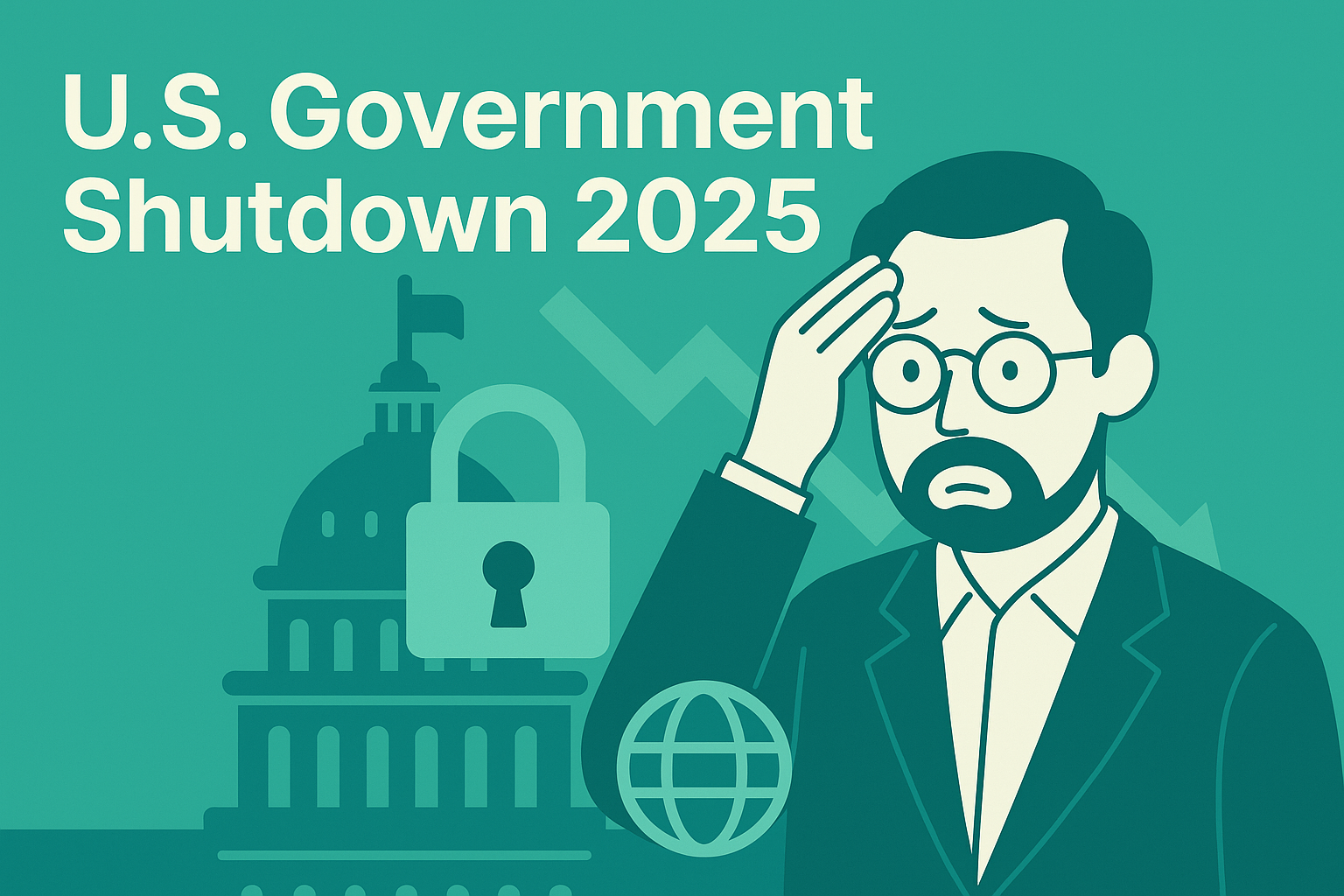Wrote By:Global Economist 2025/10
Introduction
In October 2025, the United States government once again entered a shutdown. On the surface, the cause appears to be routine: Congress failed to pass the appropriations bills on time. Yet this episode is far from business as usual.
The U.S., once the guarantor of global order, is now undermining its own credibility. History has shown that when a hegemon retreats, the vacuum destabilizes the entire world economy. This is precisely the danger that Charles Kindleberger described as the “Kindleberger Trap.”
Key Features of the 2025 Shutdown
1. An Unprecedented Scale of Furloughs
The current furloughs may affect more than 800,000 employees — surpassing both the 2013 shutdown (16 days, ~850,000 furloughed) and the 2018–2019 shutdown (35 days, ~380,000 furloughed). Even within the Department of Defense, more than 300,000 civilian staff are impacted, raising national security concerns.
2. Risk of Permanent Reductions
Unlike past shutdowns, which were temporary disruptions with retroactive pay, the 2025 shutdown carries the possibility of permanent workforce reductions. The White House and some lawmakers are openly considering this as an opportunity to “streamline” government.
3. A Policy-Driven Stalemate
The disputes at the core of this shutdown go beyond accounting: ACA subsidies, Medicaid, education funding, and social spending are all on the table. This is not a simple budgetary lapse; it is a policy-driven standoff, making resolution far more elusive.
4. An “Information Blackout” for Policymakers
With key agencies shuttered, economic data releases such as employment reports and GDP updates are frozen. The Federal Reserve, markets, and businesses must make critical decisions in the dark, amplifying volatility.
5. Widespread Suspension of Public Services
Non-essential services — including national parks, research institutions, CDC functions, and federal grants — have halted. Beyond inconvenience, this undermines scientific progress, pandemic preparedness, and international cooperation.
Historical Context: Comparing Shutdowns
- 1980s–1990s: Scattered closures, tens of thousands furloughed.
- 2013: 16-day shutdown, ~850,000 furloughed, ~$24 billion in economic losses.
- 2018–2019: 35-day shutdown, ~380,000 furloughed, ~420,000 working without pay, ~$11 billion in losses.
👉 The 2025 shutdown stands apart: larger in scale, longer in potential duration, and policy-driven in nature — making it a turning point in the history of U.S. governance.
Global Economic Fallout
Impact on Japan and the EU
Protectionist U.S. tariffs compound the damage:
- Japanese and European industries — autos, pharmaceuticals, semiconductors — face steep cost increases.
- Currency markets risk destabilization, with the yen and euro facing upward pressure.
- Bond markets, especially Japanese government bonds, are vulnerable to swings caused by dollar instability.
Vulnerabilities in Emerging Markets
Dollar uncertainty drives capital flight from emerging economies. Countries with high external debt may spiral into liquidity crises, potentially triggering new IMF bailouts.
China’s Ambitions and Limits
Beijing is pushing the Belt and Road Initiative to fill the vacuum, but debt sustainability concerns and lack of transparency limit global trust. The yuan remains far from being a true reserve currency. The result is not Chinese hegemony, but rather a world without a clear leader.
Historical Lessons — The Kindleberger Trap
Economic historian Charles Kindleberger argued that the Great Depression was prolonged because no nation provided global leadership.
- 1930s: The U.S. embraced isolationism, leaving the world without a stabilizer.
- 1970s: The Nixon Shock and oil crises destabilized the dollar-centered system.
- 2020s: The U.S. itself is now retreating, actively undermining the global order.
This is the Kindleberger Trap in action: a hegemon unwilling or unable to lead, leaving crises to spiral unchecked.
Policy Recommendations for Japan and the EU
1. Reinforce Multilateral Trade Networks
- Deepen TPP11 and the Japan-EU EPA.
- Lead WTO reform, restoring transparency and dispute resolution mechanisms.
2. Diversify Financial Risks
- Reduce reserve dependence on the U.S. dollar, shifting toward the euro, yen, gold, and digital assets.
- Expand the role of JBIC and the EIB as regional “lenders of last resort.”
3. Build a Permanent Crisis-Response Framework
- Establish a standing emergency coordination platform among G7, India, and Australia.
- Increase IMF and ADB resources to safeguard against emerging market debt crises.
4. Strengthen Economic Security
- Diversify supply chains for semiconductors, pharmaceuticals, and energy.
- Promote yen- and euro-denominated settlements to prepare for de-dollarization trends.
Conclusion — A World Without a Landlord
The 2025 U.S. government shutdown symbolizes more than political dysfunction. It is the self-destruction of American hegemony. By abdicating its role as guarantor of free trade, financial stability, and crisis management, the U.S. leaves the world dangerously exposed.
For Japan and the EU, the path forward is clear:
- Defend open trade.
- Build independent financial safety nets.
- Secure strategic supply chains.
Only by taking joint responsibility can they steer the global economy away from the Kindleberger Trap.
The era of relying on Washington as the “landlord of the world economy” is over.


